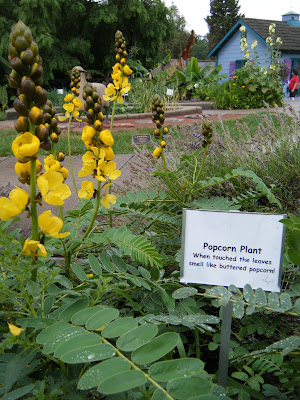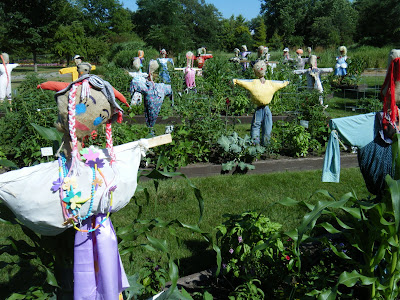Schwab Rehabilitation Hospital's rooftop healing garden is an escape from the stress of the institutional environment, designed to meet the unique needs of rehabilitation patients. Therapists were active in the design process to ensure that the healing garden offered space for therapeutic activities; included design elements for sensory therapy; and was an inviting place for patients, families, and staff to relax during leisure time...evidence from other settings demonstrates that viewing or spending time in pleasant outdoor environments can reduce pain, anxiety, emotional distress, and complications.
Hooray for horticultural therapy (we're lucky to get ours closer to home).
If you've ever spent any time in a rehab place, you'll quickly grasp the benefits of this resource. From my own experience visiting my mother in a series of such care facilities, I'm certain these outdoor spaces are as vital to visitors as they are to residents. The freedom of patients and their guests to move out of the institutional setting and into fresh air is life-giving.
We enjoyed our visit last week to this peaceful space, thanks to our good friend Rob, who welcomed us during his lunch hour at Sinai and walked us over to the roof garden.
We strolled the gently curving banks of the stream......alive with thrashing koi.
Little Green Girl and a matching pink anemone.
We sat in the shade and had our picnic: rooftop tomato and basil salad, tomatillos, and cucumber cream cheese sammos made with Debbie's crisp cool homegrown Persian cukes.
More on Horticultural Therapy from Brenda Koverman, director of inpatient therapy, and an overview of the garden's structural particulars here:
Schwab’s Brenda Koverman reports that horticultural therapy will soon be a year-round program. “Speech and language pathologists are using the environmental setting to work on orientation and language as the patients maneuver through the park and garden. The space is also being used for memory skills, problem-solving, and pathfinding. Plus, simply working in the garden helps to develop standing balance and build hand strength.Sinai's Mission. To improve the health of the individuals and communities we serve.
Sinai's Vision. To be the national model for the delivery of urban health care.
Both so clearly apparent up on this roof, where we saw a therapist working with a resident on a flower arrangement. "It's beautiful!" we called out. The patient smiled.
Mission accomplished, I'd say.
(Thanks to Debbie for sharing her photos)




































































